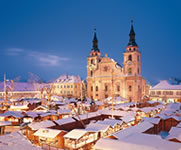
The European Route of Brick Gothic Architecture is not only the key to past times and patterns of influence. It also provides an insight into modern life in the seven countries featured and is an attractive way to get to know different people and cultures. Besides architectural impressions, the route also offers plenty of opportunities to experience and enjoy natural beauty. Long sandy beaches are characteristic of the Baltic coastline. Away from the sea, the landscape is quite hilly, even steep, and very fertile. Formed during the last Ice Age, it is a typical end moraine with hills and numerous lakes.

Thanks to the fresh, invigorating climate, the many Baltic seaside resorts have a long and proud tradition and still retain their villa-style architecture from the turn of the 20th century. The Baltic coast is a paradise for water sports lovers and for shell and amber hunters too. With its many nature reserves, abundant flora and sanctuaries for a variety of birds, it also has huge appeal for walkers and nature lovers. Besides brick Gothic architecture, the route also features the Baltic's many myths and legends, such as that of legendary pirate and freebooter Klaus Störtebeker on the island of Rügen and the legend of Vineta, a sunken town, on the island of Usedom. The European Route of Brick Gothic Architecture opens up a world of culture and architecture. It is also the perfect introduction to the people, food, countryside, music and legends of countries that line the Baltic Sea.




